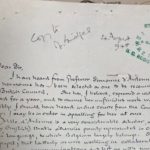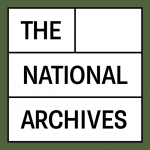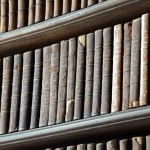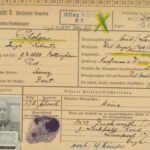From census returns to court documents, copyright entries to artistic commissions, the UK National Archives offers an extensive collection of records that explore deaf histories, offering a glimpse into the experiences of individuals with hearing impairments across the ages.
British Sign Language
British Sign Language (BSL) is a natural human language with its own vocabulary and grammar. Unlike spoken or written languages, sign languages like BSL are not manual renditions of the dominant languages spoken by hearing communities.
Approximately 50,000-70,000 people in Britain utilise BSL as their preferred means of communication. Like many other sign languages, BSL is a minority language cultivated by a community that has endured discrimination over centuries. The origins of all sign languages lie in the gestural communication between deaf children and hearing adults.
Historical accounts dating as far back as the 15th century depict deaf individuals using signs. The earliest detailed documentation of these signs emerges in the Marriage Register of St Martin’s, Leicester, in 1576, chronicling the signed vows of Thomas Tillsye.
Deaf histories: Five example records from the UK National archives
- A Legal Struggle in 1718
In 1718, the Court of Chancery heard the case of ‘Benjamin Ferrers, gent deaf and dumb of St Andrew Holborn, London.’ This historical document, catalogued reference C 11/380/41, highlights the inclusion of deaf individuals in legal proceedings. Far from limiting their access to justice, these records showcase deaf people actively participating as plaintiffs and defendants, with someone representing them in court.
Explore the record details here.
- ‘The Mimosa or Flower Cornet’ (1849)
Dated May 25, 1849, catalogue reference BT 45/10/1897 preserves a detailed drawing of ‘The Mimosa or Flower Cornet’ ear trumpet. This registered design, part of copyright protection, aimed to amplify sounds discreetly. Designed by William Blackmore Pine of London, the trumpet was ingeniously concealed in a floral headband, challenging the notion that hearing aids needed to be unsightly.
To view the record details, click here.
- Royal Schools for the Deaf and Dumb (1894)
In 1894, Annie Haslam, a student at the Manchester Schools for the Deaf and Dumb, presented a bouquet to Queen Victoria. The photograph, captured by Arthur Reston and catalogued as COPY 1/416/626, not only preserves this momentous occasion but also traces Annie’s life, including her marriage to fellow pupil Ernest Yarnall in 1909.
Take a look at the historical photograph below:
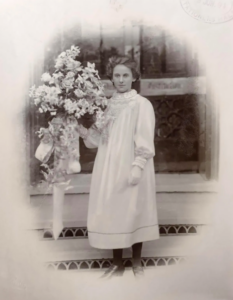
Annie Haslam, Student at the Manchester Schools for the Deaf and Dumb, 1894
- Silent Voices in the Census (1921)
The 1921 census entry, catalogue reference RG 15, documents Ivy Ainsworth, a 16-year-old living in Clitheroe with her parents. The record reflects the terminology of the time, labelling Ivy as ‘Deaf & Dumb.’ Despite the absence of an ‘infirmity column,’ this census entry illustrates the persistent recording of deafness or disability, challenging prevailing beliefs about the perceived value of such information.
- Theatrical Triumphs in 1972
Catalogue reference INF 6/1088 shows production documents for the British Theatre of the Deaf, a performance group formed in 1972. The government-sponsored film, featuring mime teacher and TV presenter Pat Keysell, sheds light on the emergence of deaf theatre as an art form during this era. The 13-minute film is available for free on the British Film Institute website.
The evolution of deaf understanding and the road ahead
In examining historical records such as these, it is apparent that our understanding of deafness has progressed, creating a more inclusive society. Legal battles and innovative developments reflect notable strides, yet there remains work to be done. Persistent barriers and stereotypes must be dismantled to ensure equal contribution and thriving opportunities for the deaf community. The historical records serve as both evidence of progress and a call to ongoing action, emphasising the need for an environment where every voice is heard, valued, and embraced.
Image Source:
- Annie Haslam, Student at the Manchester Schools for the Deaf and Dumb, 1894: The UK National Archives
- Indian Sign Talk, 1893: Picryl


